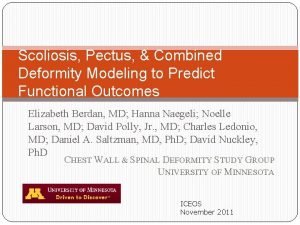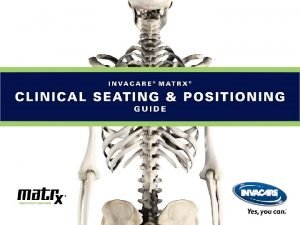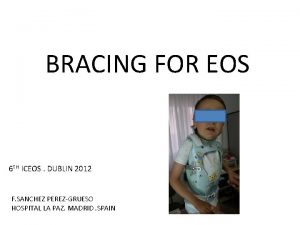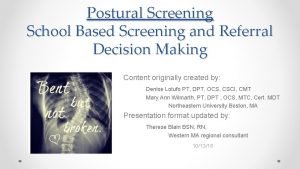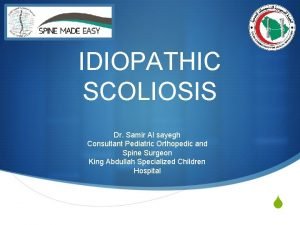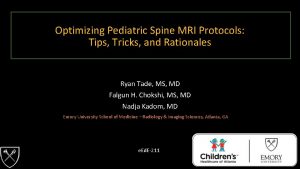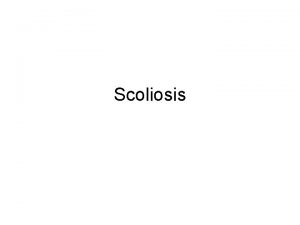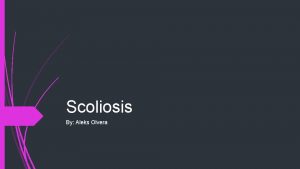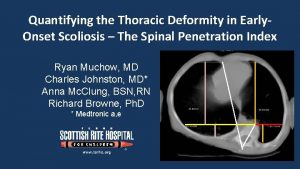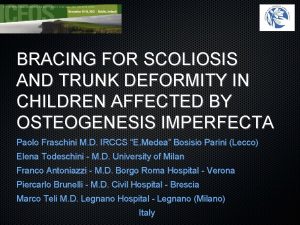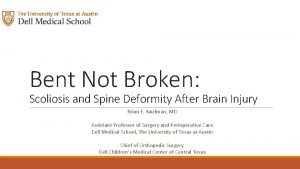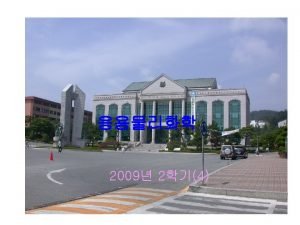SCOLIOSIS Three dimensional deformity involving rotation of the









- Slides: 9

SCOLIOSIS § Three dimensional deformity involving rotation of the vertebral bodies § Causes the rib cage to become misshapen § Body develops a compensatory curve to maintain posture and balance § Nonstructural scoliosis does not involve rotational or muscular deformity due to poor posture

Degrees § 10 to 20 a slight curve § More than 40% curve requires surgery § More than 80% compromises respiratory function and is considered severe

Clinical Manifestations § § § Visible curve of the spine A rib hump when bending forward Asymmetric rib cage Uneven shoulder or pelvic heights Prominence of scapula or hip Difference in space between arms and trunk when standing § Apparent leg-length discrepancy

Diagnostic Evaluation § Routine scoliosis screening § Radiographic examination

Management § Regular and periodic observation with radiographic evaluation § Bracing § Spinal fusion surgery § Body image – talk about diagnosis, treatment, and feeling about experience § Discuss activities – school or activities § Notify school nurse

Bracing § § § Worn 18 -23 hours a day Wear 100% cotton, seamless T-shirt Proper skin care Clean inside/outside of brace daily Notify HCP – numbness tingling of arms, leg, feet, cracks or breaks in brace, skin problems, respiratory problems

SURGERY § § § Curvature > 45 degrees Spinal fusion with internal instrumentation Delayed as long as possible to allow maximum skeletal growth § Most common posterior fusion § Iliac bone graft can be used for the fusion

Spinal Fusion § § § Neurovascular checks – 6 P’s Log rolling every 2 hours Pulmonary toileting Wound care Pain – PCA pump Rule out complications – neurological status lower extremities, fluid status, bleeding, return of bowel function

Discharge teaching § § Wound care Importance of well balanced diet Activity restrictions (Orthoplast jacket) Report to HCP – skin breakdown, wound infection, numbness/tingling extremities, difficulty breathing § Provide information about National Scoliosis Associations


